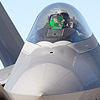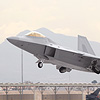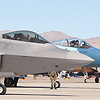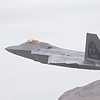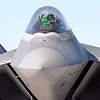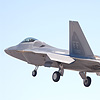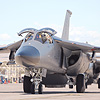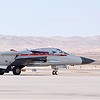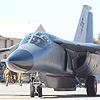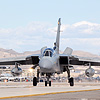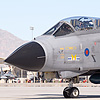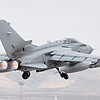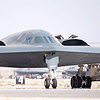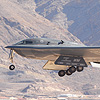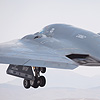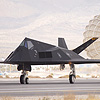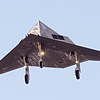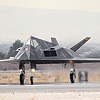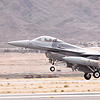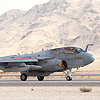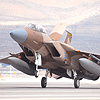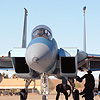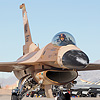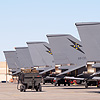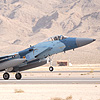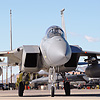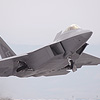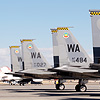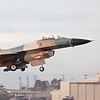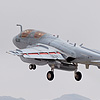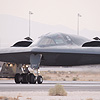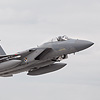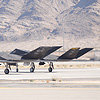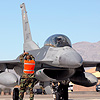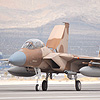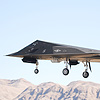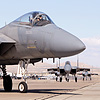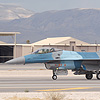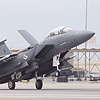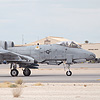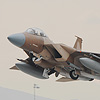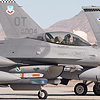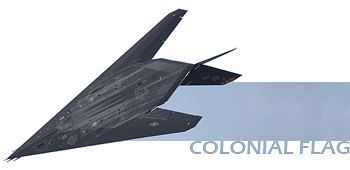
Red Flag 2007 (Period 2) Feature Report
Saturday 3rd February - Saturday 17th February
5th-16th February 2007 saw the second phase of the quarterly USAF hosted Red Flag exercise which is held at Nellis Air Force Base near Las Vegas, Nevada, USA. Phase two of Red Flag 07-02 heralded some interesting 'firsts' and 'lasts' as the armed forces of the United States were joined by elements from the UK (RAF) and Australia (RAAF) to form an air armada of over 200 aircraft. This period of the Red Flag exercise was nick-named "Colonial Flag" as both the United States and Australia were once colonies of the United Kingdom.
spent three days at Nellis AFB, Nevada for Red Flag 2007 (Period 2). All photography by the author.
Red Flag is an advanced and highly realistic combat training exercise designed to push fighter pilots to the limit. Sorties are conducted over the vast stretch of desert that is the Nevada Test and Training Range, which measures an area of 4687 square miles. The level of training is intense and can feature air-to-air combat and electronic warfare scenarios in addition to missions involving the engagement of ground targets, such as mock airfields, convoys, and other defensive positions.
Making it's Red Flag debut for the attacking 'blue' force was the USAF's latest fighter – the F-22 Raptor. The 94th FS from Langley AFB, Virginia deployed 14 Raptors and 197 airmen to participate in the Red Flag exercise. The unmatched maneuverability and power of the F-22 is best summed up by the words of a F-15C Agressor pilot of the defending 'red' force: "I can't see the [expletive deleted] thing, it won't let me put a weapons system on it, even when I can see it visually through the canopy. [Flying against the F-22] annoys the hell out of me". After clocking up a highly impressive air-to-air kill ratio, the Raptors turned their hand to air-to-ground missions later on in the exercise to show the versatility of this stealthy super jet.
The opportunity of enhanced training with other coalition partners was too good to miss for the Royal Australian AF. Stopping off in Hawaii en route to Nellis AFB were six F-111Cs from 1 Squadron, RAAF Amberley. Making one of their last Red Flag appearances, the Aardvarks were a useful long range strike asset for the attacking blue force. They were joined by two C-130H Hercules transport aircraft from RAAF Richmond who participated in both the airlift and special forces roles. The RAAF's first C-17 Globemaster III from No. 36 Squadron provided support and helped to assemble a team of approximately 260 support personnel present during the Nellis exercise.
The Royal Air Force deployed nine Tornado GR.4 aircraft from the RAF Lossiemouth wing to exercise with their colonial partners. No. 12(B) Squadron performed the trail to Nellis AFB with No. 617 'Dambusters' Squadron flying the jets during period two. With weapon loads varying from 1000lb bombs to the Paveway family of laser guided weapons, the swing-wing Tornados flew with loaded Boz 107 chaff-flare dispensers which reflected the leathality of the threats they were flying against.
A typical Red Flag mission launch always starts with the E-3C Sentry control aircraft. The main function of this high value asset being the safe passage of the 'blue' attacking and 'red' defending forces through the exercise area. The tactical controllers onboard the AWACS were also responsible for marshalling aircraft to the designated air-to-air refueling points which were each allocated one or two KC-135R Stratotanker aircraft from Grand Forks AFB, North Dakota. Depending on the mission profile, an E-8 J-STARS or RC-135V also participated in the ensuing battle but the stealthy B-2A Spirit was a regular feature, four of which were deployed to Nellis from Whiteman AFB, Missouri.
Continuing the stealth theme and making their last Red Flag appearance were eight F-117A Nighthawks from the 49 FW at Holloman AFB, New Mexico. Gracefully flying into retirement, the stealth fighters at Nellis still looked as futuristic as the day they were revealed to the public in April 1990 – at Nellis AFB ! With the advent of the larger B-2 Spirit bomber and advanced F-22 Raptor, the Nighthawk falls short on the range and bomb carrying capacity required for today's real-time battlefield. A unique type in USAF service, the F-117 will be sorely missed.
With the 48 FW and their Lakenheath based F-15E's departing after period one of Red Flag, it was left to the F-16CG's from the 27 FW at Cannon AFB in New Mexico, to perform the bulk of the strike missions. Flying with mixed loads including Paveway II laser guided bombs and HARM anti-radar missiles, the Fighting Falcons were supported in the electronic warfare role by EA-6B Prowlers deployed to Nellis from NAS Whidbey Island, Washington.
Opposing the large multi-national air force gathered at Nellis is the 'red air' element - the 414th Combat Training Squadron and their fleet of F-15s and F-16s. Adorned in a myriad of attractive colour schemes, the aggressors are flown by top USAF pilots in order to maximise the training potential of the mission being flown. Using all their combat experience, the 'red star' Eagles and Fighting Falcons attempt to disrupt and saturate the situational awareness of the strike package as they ingress towards the target area. Even when killed (shot down) the aggressors can regenerate to re-enter the electronic battlefield once more to increase the learning curve of their students.
Squadron Leader David Catlow, Chief of Staff for the Royal Air Force detachments at Nellis summed up the success of Colonial Flag:
"Put simply, the lessons we learn here will teach us to fight better together".
